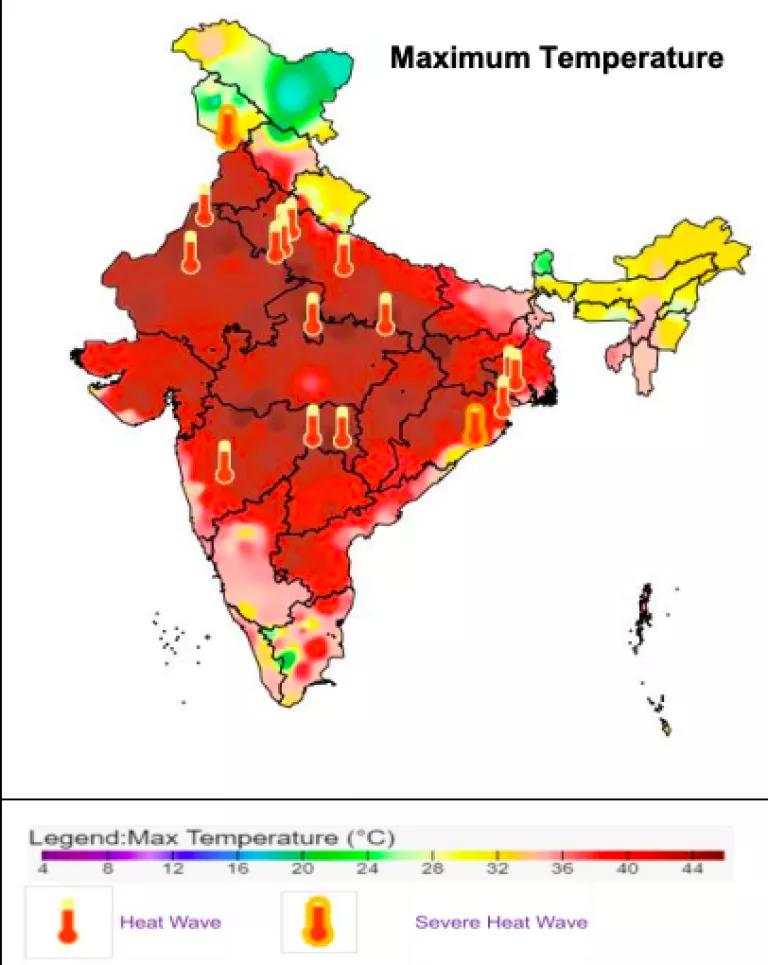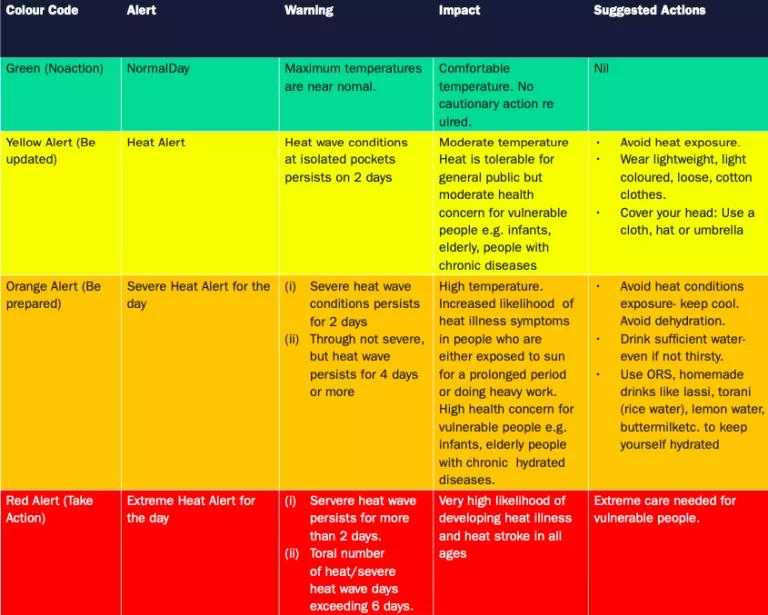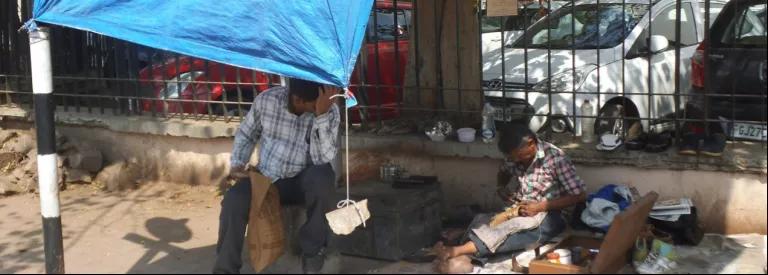Increasing Need for Climate Adaptation in India
With temperatures topping 45°C (113°F) in many cities and towns across Maharashtra, Punjab, Haryana, Rajasthan, Delhi and Uttar Pradesh, millions of people in India are experiencing brutal conditions early on this heat season.

Observed Maximum Temperatures Across India on April 28th
India Meteorological Department (IMD)
Guest blog by Jessica Korsh
With temperatures topping 45°C (113°F) in many cities and towns across Maharashtra, Punjab, Haryana, Rajasthan, Delhi and Uttar Pradesh, millions of people in India are experiencing brutal heat early on this heat season. This March was the hottest in well over a hundred years and nearly all of India’s states and major cities have had a heat-related watch or alert in effect. The weather department has warned that five states will witness their hottest summer ever. Moreover, the sweltering heat is spiking power demand and India is facing its worst fuel shortage in more than six years. As heat waves become more intense and more frequent, the need for investing in climate adaptation is urgent, not just in India, but across the developing world.
The India Meteorological Department (IMD) issued an orange alert warning for five states: Rajasthan, Delhi, Haryana, Uttar Pradesh, and Odisha. Other parts of northwestern and central India have been put on yellow alert.

Color codes for heat alerts and impacts
Extreme heat is not merely an inconvenience: it can be dangerous, even deadly, to public health, as well as threaten livelihoods and impact the economy. Health risks from heat stress are especially dangerous for certain populations, including older people, city dwellers, people living with chronic health conditions like heart and lung disease, and people living in slums and low-income communities because of the combined effects of heightened heat exposures, health vulnerabilities, and limited access to affordable cooling options.
Extreme heat is striking earlier, more intensely, and more frequently. Scientists believe that this extreme heat could be the new normal, so significantly cutting down greenhouse gas emissions is critical. Limiting global warming to 1.5°C instead of 2°C could result in around 420 million fewer people being frequently exposed to extreme heat waves. With unchecked fossil fuel emissions, the heat and humidity in parts of India could be impossible to survive. India would also emerge as the one of the most vulnerable nations in terms of crop production.

A Cobbler in Ahmedabad, Gujarat works under a makeshift shelter
NRDC
As climate change-fueled extreme heat is already taking its toll and is poised to worsen, coordinated actions to strengthen heat resilience in India are needed, particularly focused on the most vulnerable. Many states have developed Heat Action Plans, cities are installing cool roofs, and villages are implementing green village plans. Front-line communities are working toward adaptation and implementation of the tools they need to mitigate against climate change.
In addition to ambitious, immediate reductions in greenhouse gas emissions, there needs to be a significantly larger investment in climate resilience and adaptation. Despite global progress, adaptation gaps exist between current levels of adaptation and levels needed to respond to impacts and reduce climate risks. Ahead of COP 27 in Sharm-el-Sheikh, Egypt, countries are working toward defining a global goal on adaptation and providing funding to developing countries for adaptation action by 2025. What they come up with will impact the fate of millions of vulnerable people all over the world.
Jessica Korsh is a climate health expert working as a consultant with NRDC.



